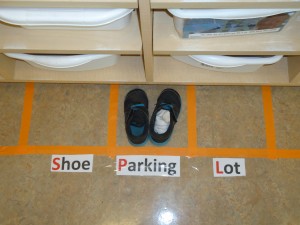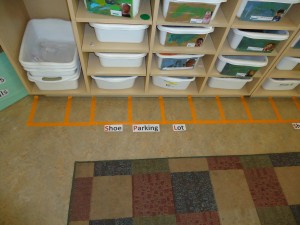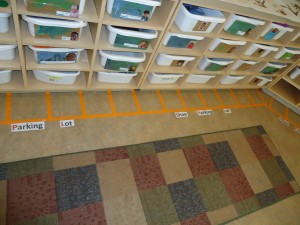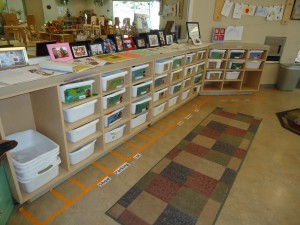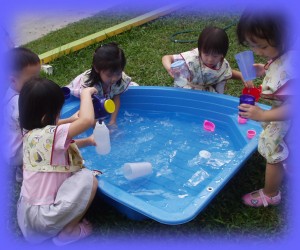Shoe Parking Lot
We are very excited to share with you are new Shoe Parking lot in Room 5. This is a new shoe policy strategy to balance our shoe basket policy. We have observer our children are eager to find ways to practice their classroom expectations, especially: “We are Responsible”.
We notice that our children enjoy taking their shoes off to use all their senses to explore, in some occasions we could not find right away their shoes in the basket , in other occasions they place them in their cubby and at the end of the day some children will be scavenger hunting their shoes.
These are some of the reasons that gave life to our new “Shoe Parking Lot”.
Where is it located? It is under the cubbies, so please watch your step when coming close to the signing book.
How does our Shoe Parking Lot work?
Our children, while indoors if they choose to take off their shoes, they will place them in the shoe parking lot.
Before we go outside children will choose to put their shoes on or take them outside to place in the shoe basket.
During our outdoor time children will have access to the shoe basket in case they need to place their shoes on to use the bikes, scooters or will like to put their shoes back on.
If our children have their shoes loose in the shoe basket before we go back in the classroom at the end of the day , they will grab them, walk in the classroom and place them in the Shoe parking lot and walk to our carpet area for our dismissal circle.
This way when parents come in for pick up, children will have their shoes accessible to take them. We do encourage parents to promote the children be the ones to pick up their shoes from the Shoe Parking Lot and give the child a type of acknowledgment of the sense of how responsible the child is being.
We appreciate all the support our parents give to our class community. Please enjoy the sneak preview pictures

